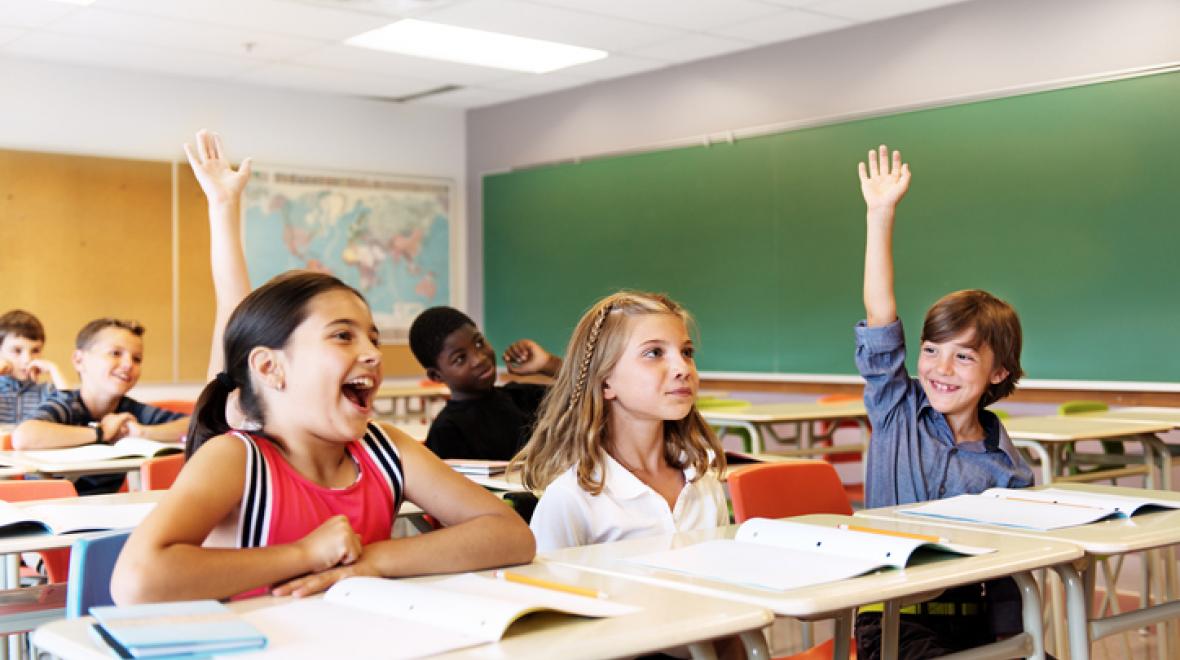
Choosing a school for your child is a daunting task. You want a place where they feel safe (physically and emotionally), is excited about what they're learning and feels challenged by the coursework. Ultimately, you want a place that will prepare your child with a solid foundation for the next step in life. But until they spend time there, how can you know?
When looking at a school, consider the ways in which it fosters relationships and engages students in the learning process. When these two things are in place, students are more likely to take risks and persevere in the face of challenging coursework.
A strong focus on building relationships, relevance and rigor will lead to your child’s happiness, sense of accomplishment and ability to take on life’s challenges.
Relationships
Students benefit from working with adults who know them well and who create an atmosphere of trust, so that students are willing to take greater risks as learners. Without the foundation of strong relationships between students and teachers, asking students to take on more challenging assignments can cause them to become frustrated and withdrawn.
Schools create ways for teachers to know students better, allowing for relationships to grow naturally. When visiting a school, look for:
- Smaller class sizes and/or low student-to-teacher ratios
- Students having the same teacher for more than one class or more than one year
- Students staying with the same cohort of students as they move between classes
- Advisories, where teachers take on a counseling role and teachers and students have a chance to learn about each other outside of an academic framework
Relevance
When students and teachers can both answer questions like, “What is the point of school?” and “Why should I study this?” they are addressing the principle of relevance.
Ideally, students can relate what they are studying to questions about their future, current issues in their personal lives or something they have been wondering about. Engaging students in making decisions about what and how they learn enhances their understanding, establishes a sense of belonging and fosters lifelong skills.
Relevant instruction engages students in multiple learning styles. It uses the diversity and culture of each student to build effective learning experiences. Look for evidence of classwork that gives students the opportunity to make decisions about their learning. Examples of this might include:
- Students choose which books to read or which topics to research
- Students can express themselves and present their work in a variety of ways (video, writing, oral presentation, art, drama, etc.)
- Students reflect on their own culture and identity in relation to the coursework
- Students have some choice of which courses to take or which topics to study
Rigor
A rigorous classroom experience takes students outside their comfort zone. Parents often think about rigor as the amount of coursework — highlighting the need to cover more academic content and focus more specifically on discipline and deep mastery of fundamental skills. This notion persists in education generally because rigor defined as more content coverage is easily measured and predicted.
However, profound changes in our society over the last three decades and a shift from an industrial economy to a “knowledge economy” are challenging educators’ notion of what rigor is and what it looks like in the classroom.
Students must be prepared for a world that requires skills in reasoning, communication, problem solving and collaboration. The kind of classroom that builds these skills requires students to feel comfortable working with other people and to take on learning challenges that go beyond the traditional textbook.
A school that fosters greater personalization and relevance is poised to meet the challenge of creating greater rigor.
Students who feel authentically known and understood by their teachers are, on the whole, more willing to accept the challenge of rigorous work because they know their teachers will support them in it.
Students are willing to take risks and try new skills or persevere even when they dislike the subject because they see an inherent value in what they are doing, either in terms of personal growth or in keeping up their grades. A school’s classroom instruction is rigorous when:
- Coursework is complex, ambiguous, provocative and emotionally or personally challenging
- Students are engaged in active participation, exploration and research
- The school’s focus is on competence rather than coverage of material
- Learning involves problem solving, creativity and reflection
- Academic challenges and temporary classroom setbacks are opportunities for deeper learning
In comparing schools, most parents think about how nice the building is, what extracurricular activities are available, and how high last year’s test scores were.
Of course, these can be important factors to consider. But relationships, relevance and rigor make up the foundation to a student’s success











